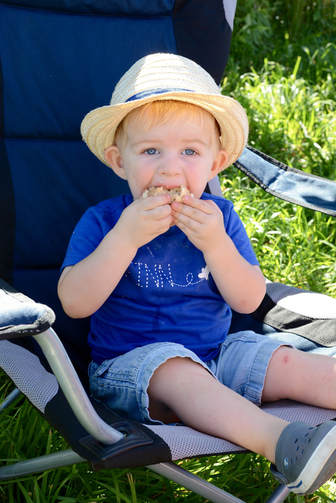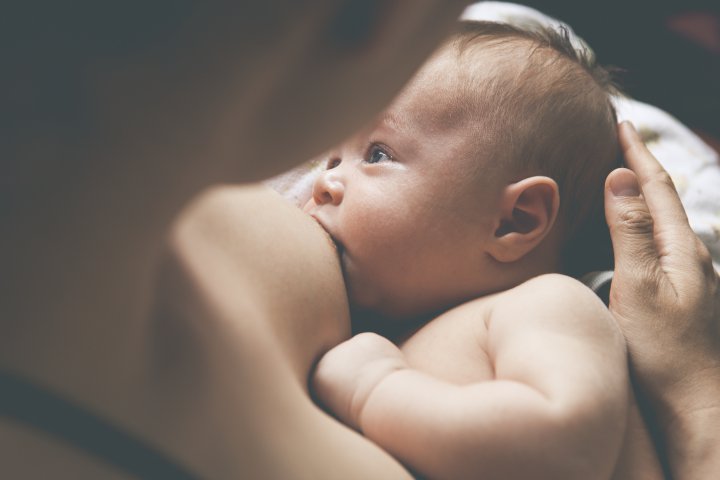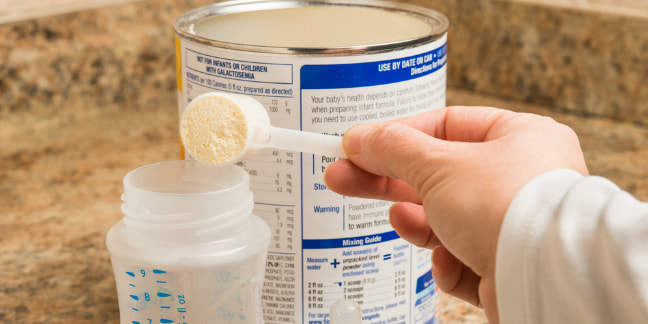|
Eat lactation cookies, drink a special tea, eat steel cut oatmeal around the clock, drink beer, take herbs, drink extra water, sleep… the list just keeps going! The truth is that there is no magic solution to making more milk. And after you have tried the list above you will likely feel exhausted, frustrated and perhaps defeated. I’m also concerned about the number of herbal supplements that are recommended to nursing moms without a thorough look into that mom’s medical history. I believe there are herbs that can be highly effective BUT depending on your medical history you can have adverse effects such as making even less milk! The only thoroughly researched and backed up SAFE method is to pump and/or breastfeed frequently and effectively. Newborns eat often and they don’t like schedules. They nurse when they are hungry, thirsty and when they just want a little snack! I often here “but he just ate, he can’t be hungry again” 15 minutes after a baby supposedly finished eating. Yes – he may want to eat a little more – maybe he wants desert with that meal! This doesn’t mean you aren’t making enough milk and that he didn’t get enough milk in his last nursing session. And if all really doesn’t seem ok then meet with a lactation counselor (ME!) to asses how your baby is nursing. If I can’t help you, you can rest assured that I have a team of professionals in my network that can help guide you even more. In the meantime, practice some self-care. Try to take a few minutes for yourself every day, make a cup of tea that you like, and if you are looking for a yummy fall treat I’ve got a great recipe I found. **I made a few adjustments to the recipe – the original can be found here: https://www.browneyedbaker.com/apple-cupcakes-cinnamon-cream-cheese-frosting/ APPLE CUPCAKES WITH CINNAMON-CREAM CHEESE FROSTING YIELD: 10 cupcakes Spiced apple cupcakes topped with a cinnamon-cream cheese frosting… A perfect fall dessert! INGREDIENTS: For the Cupcakes: 1¼ cups all-purpose flour 1 teaspoon baking powder ½ teaspoon salt ¼ teaspoon ground cinnamon ¼ teaspoon ground ginger ¼ cup unsalted butter, at room temperature 1 cup granulated sugar 1 egg, at room temperature ½ teaspoon vanilla extract ¼ cup + 2 tablespoons buttermilk, at room temperature 2 cups shredded Gala apples (about 2 medium apples, peeled) For the Cinnamon-Cream Cheese Frosting: ½ cup salted butter, at room temperature 4 ounces cream cheese, at room temperature 1½ teaspoons vanilla extract 1 cup powdered sugar 1 teaspoon ground cinnamon DIRECTIONS:
My little guy just can't get enough of these cupcakes!
My last post was about safe formula prep so it's fitting that we now talk about breast milk storage! No need to reinvent the wheel here - this is right from the Center for Disease Control (CDC) website! Countertop, table
Room temperature (up to 77°F or 25°C) 6–8 hours Containers should be covered and kept as cool as possible; covering the container with a cool towel may keep milk cooler. Insulated cooler bag 5-39°F or -15-4°C 24 hours Keep ice packs in contact with milk containers at all times, limit opening cooler bag. Refrigerator 39°F or 4°C 5 days Store milk in the back of the main body of the refrigerator. Freezers Store milk toward the back of the freezer, where temperature is most constant. Milk stored for longer durations in the ranges listed is safe, but some of the lipids in the milk undergo degradation resulting in lower quality. Freezer compartment of a refrigerator 5°F or -15°C 2 weeks Freezer compartment of refrigerator with separate doors 0°F or -18°C 3–6 months Chest or upright deep freezer -4°F or -20°C 6–12 months Reference: Academy of Breastfeeding Medicine. (2004) Clinical Protocol Number #8: Human Milk Storage Information for Home Use for Healthy Full Term Infants [PDF-125k]. Princeton Junction, New Jersey: Academy of Breastfeeding Medicine. Some additional notes:
I spent last week at a training in Washington D.C. to become a Certified Lactation Counselor (CLC). Lactation and infant feeding is a field I am truly passionate about and I received so much information at this training that I want to share with others!
Just some background information on my personal lactation journey first… I always thought that I would breastfeed my son. In fact, I didn’t even realize that there could be obstacles in my way until I was sitting there postpartum with a lethargic baby who wouldn’t gain weight. I saw numerous lactation counselors, consultants and even a breast doctor! My son had a tongue and lip tie revision, was closely monitored for weight gain, and had formula supplementation. The World Health Organization (WHO) recommends that, “infants are exclusively breastfed for the first six months of life. Babies who are exclusively breastfed will get the best start for growth, development and health. Infants who are not breast fed need a suitable breast-milk substitute, for example, infant formula.” So I would like to talk about formula and safe formula preparation because many babies do receive formula and unfortunately many parents do not know how to safely prepare it. I have same personal favorites when it comes to formula. If you would like to look more into it there is some great information on the formulas Holle and Hipp on the Little Moo Organics website (which I have personally ordered from). I do not have any affiliation with this website/company but from personal experience I found them to be reliable and informative. You cannot go to the food store in the United States and purchase these formulas. I am also happy to discuss with you why I like these formulas! Once you choose your formula it is important to prepare it correctly and safely because powdered formula IS NOT sterile and may cause serious illness in infants. So regardless of which formula you use, Holle, Hipp or a name brand sold in the U.S., i.e. Similac or Enfamil, you have the same procedures to follow. Please note that this is for POWDERED FORMULA. Premixed liquid formula does not need any preparation. Safe Powdered Formula Preparation:
**Throw away any feed that has not been consumed within two hours. WHO also states, “It is safest to prepare a fresh feed each time one is needed, and to consume immediately. This is because prepared feeds provide ideal conditions for bacteria to grow - especially when kept at room temperature. If you need to prepare feeds in advance for use later, they should be prepared in individual bottles, cooled quickly and placed in the refrigerator (no higher than 5 oC). Throw away any refrigerated feed that has not been used within 24 hours.” I have prepared up to 12 hours worth of formula before (follow all cleaning, sanitizing and measuring guidelines as stated before). This helps cut down on the amount of preparation needed for each individual feed. You can see the full WHO article here. |
Astrid Hufnagel is a Birth and Postpartum Doula living in Montclair, NJ and serving the following counties in Northern NJ: Essex, Union, Morris, Passaic, Bergen, Hudson, Somerset and Middlesex




 RSS Feed
RSS Feed